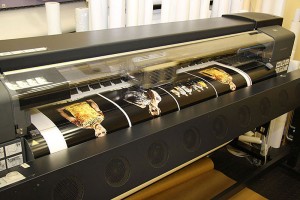 The digital revolution for the reproduction of large format images commenced towards the end of 1996 & beginning of 1997. Prior to this all short run large format images were done through photographic reproduction.
The digital revolution for the reproduction of large format images commenced towards the end of 1996 & beginning of 1997. Prior to this all short run large format images were done through photographic reproduction.
This was primarily a human controlled process involving the setup of paper in darkrooms, setting of timing exposures & the use of development chemicals. This was not an exact science & colour reproduction was difficult to manage. In addition, the incorporation of text & logos in photographic reproduction was complex & fine detail difficult to achieve.
The digital revolution changed all that. Although at the outset machines were slow, had low resolution and inks were all water based.
Over time print speeds, resolution and ink systems have changed considerably. In addition machines have become considerably wider.
The nett result is that media too is now available to satisfy the print widths of these machines. The need for panelling of graphics has disappeared and graphics can now be produced in a single piece for various applications. In addition colour management is easier and colour reproduction is no longer affected by the vagaries of the weather.
Applications for the use of full colour graphics have increased dramatically. Water based inks presented problems with light fastness and more recently the use of solvent based inks are being frowned upon at many retail establishments as the process is not environmentally friendly.
With the environment in mind, we at Graphic Laminates have installed environmentally friendly Latex printers & printers utilising UV cured inks. Our solvent printers have long been scrapped.
